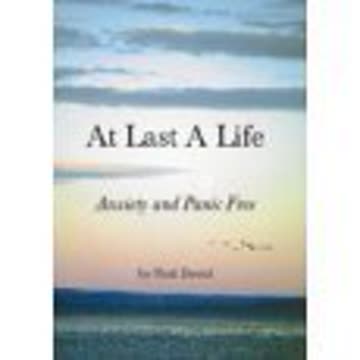Key Takeaways
1. Anxiety is a Condition, Not an Illness: Understand Its Roots
Anxiety is not an illness; it is a condition, brought on mainly by long term stress or worry and is your body’s way of telling you that it is overworked.
Overworked body. Anxiety is fundamentally your body's alarm system signaling that it's been pushed too hard, often by prolonged stress and worry. It's not a disease you "catch," but a state of being that develops when your nervous system becomes overwhelmed and sensitized. This can stem from various factors, including:
- Long-term stress (work, relationships, bereavement)
- Substance abuse or withdrawal
- Continuous worry about daily pressures
Three stages of fatigue. This condition typically manifests in three stages of fatigue, each contributing to the overall anxious state. First, muscular fatigue (tired nerves) leaves you physically drained and uninterested, as adrenaline constantly overworks your body. Second, mental fatigue (tired mind) results from ceaseless introspection and questioning, leading to feelings of unreality and detachment as your mind tries to protect itself from overload. Finally, emotional fatigue strips away confidence and hope, making even simple tasks feel pointless.
The anxiety cycle. The core problem is that the initial symptoms of anxiety become a new source of worry, creating a vicious cycle. Instead of resting, your body takes on more stress about how you feel, leading to a continuous loop of feeling worse, fighting the feelings, and worrying more. Breaking this cycle requires understanding that your body is simply overworked and needs a break, not more internal struggle.
2. The Breakthrough: Stop Fighting to Get Better
“Paul, you will never get better until you stop trying to get better”
A profound realization. After a decade of suffering and countless failed treatments, the author received a life-changing piece of advice: true recovery begins when you cease the relentless struggle to "get better." This seemingly paradoxical statement means abandoning the constant fight against symptoms, the endless search for a quick fix, and the mental battle to control how you feel. It's about recognizing that your body's natural healing mechanisms are hindered by your active resistance.
The futility of fighting. The author's own experience mirrored this, as he spent years trying every "cure" imaginable, from medication to alternative therapies, only to worsen. He realized that his daily efforts to "rid" himself of anxiety were actually adding immense stress and pressure to an already exhausted system. This constant internal warfare prevented his mind and nerves from getting the rest they desperately craved, perpetuating the cycle of suffering.
Letting recovery come. The path forward involves a fundamental shift in attitude: instead of actively pursuing recovery, you allow it to unfold naturally. This means putting down your "tools" of fighting, worrying, and self-pity, and trusting your body's innate ability to heal. Just as a broken leg needs rest to mend, your tired nerves and mind require a cessation of struggle to regain their balance. This acceptance, rather than active pursuit, is the true catalyst for healing.
3. Embrace Your Feelings: Move Towards Fear, Not Away
To lose any fear, you must be willing to feel it.
Confronting the "monster." Many anxiety sufferers instinctively withdraw from uncomfortable feelings and situations, creating a "monster" in their minds that they constantly avoid. This avoidance, however, only amplifies the fear and gives the anxiety more power. The key to breaking free is to consciously move towards your feelings, rather than running away or trying to suppress them. This means accepting that it's okay to feel anxious, panicky, or strange, and allowing those sensations to be present without judgment or resistance.
De-sensitization through exposure. The author learned that by refusing to run from situations that triggered his anxiety, he gradually de-sensitized himself. He would stay in uncomfortable social settings or on flights, allowing the panic to peak, and consistently found that nothing catastrophic happened. This repeated exposure, coupled with an attitude of "so what," taught his body that these feelings were harmless and would always subside. This process builds genuine inner confidence, replacing the fear of what might happen with the knowledge of what does happen (nothing).
Breaking avoidance habits. Avoidance is a powerful habit that keeps you trapped. To recover, you must actively challenge these ingrained behaviors. This doesn't mean throwing yourself into the most terrifying situations immediately, but taking small, consistent steps to re-engage with life, regardless of how you feel. Each time you choose to "feel the fear and do it anyway," you chip away at anxiety's control, proving to yourself that you are in charge, not your anxious feelings.
4. Unmask Depersonalization and Irrational Thoughts
When you attach a false sense of importance to a thought, it will often appear more serious than it is.
The illusion of unreality. Feelings of depersonalization (DP) and derealization (DR) – feeling strange, detached, or like you're in a dream – are among the most distressing anxiety symptoms, often leading sufferers to believe they are "going mad." However, these sensations are simply a product of an over-tired mind, exhausted by constant worry and introspection. Your mind, overwhelmed by the ceaseless internal chatter, activates a protective mechanism, shutting down emotions and creating a sense of detachment.
Irrational thought patterns. Similarly, scary or irrational thoughts ("what ifs") are another common manifestation of anxiety. Your mind, constantly searching for answers and operating in a sensitized state, magnifies every thought, making it seem significant and threatening. These thoughts are not reflections of reality or impending actions; they are merely adrenaline finding an outlet, or habits of an overactive imagination. The more you try to push them away or analyze them, the more power you give them.
Disarming the mind's tricks. The key to overcoming DP/DR and intrusive thoughts is to strip them of their perceived importance. For DP/DR, surrender to the strange feeling, pay it no respect, and understand it's temporary. For irrational thoughts, allow them to come and go without reaction or judgment.
- Don't try to force them out; give them space.
- Question their rationality: "What's the worst that could happen? Is this real?"
- Recognize them as "anxiety letting off steam."
By doing so, you starve them of the fear and attention they need to persist, allowing your mind to gradually clear and reconnect with reality.
5. Address All Symptoms Under the "Anxiety Umbrella"
I am forever telling people not to separate each symptom and worry about them individually.
Unified approach. Anxiety manifests in a myriad of physical and mental symptoms, from headaches and blurred vision to churning stomachs and ringing ears. A common mistake is to treat each symptom as a separate, unique problem, leading to endless worry and a fragmented approach to recovery. The author emphasizes that all these diverse sensations fall under the single "anxiety umbrella." They are all products of sensitized nerves and a tired mind.
Stop the symptom chase. Instead of investigating each new symptom, Googling its potential causes, and fearing it as something "more serious," you should simply acknowledge it as another facet of anxiety. This prevents the creation of a multitude of new worries, which only further exhausts your system. When you stop giving individual symptoms undue attention and fear, they begin to lose their power and gradually fade.
Trust in the body's healing. Whether it's a tight band around your head (tense scalp muscles), trouble swallowing (tense throat muscles), or shaking hands (excited nerves), the underlying cause is the same: an anxious, overworked body. By accepting these symptoms as temporary and harmless expressions of your current state, you allow your body the space to relax and heal. When the overall anxiety subsides, all its accompanying symptoms will diminish together, like flu symptoms fading as you recover from the illness.
6. Patience and Persistence: Recovery is a Gradual Process
Recovery comes at its own pace, but I did notice myself gradually improving and becoming more alert, less clogged up.
No instant cures. The author, having spent a decade searching for a "magic pill," unequivocally states that there are no shortcuts to recovery. Anxiety is a condition that develops over time, and reversing it requires patience, not instant gratification. Expecting immediate results only leads to frustration and disappointment, perpetuating the cycle of worry and self-pity. Recovery is a gradual process, often described as coming back in "layers" or a "transition."
Embrace setbacks. The path to recovery is rarely linear; it's an "up and down affair." You will experience good days and bad days, moments of progress followed by apparent setbacks. The crucial lesson is not to let these bad days derail your progress.
- Don't question why you feel bad after a good day.
- Don't fall back into self-pity or the belief that you're "back to square one."
- View setbacks as opportunities to practice your "whatever" attitude and reinforce your commitment to the new approach.
Each time you navigate a bad day without succumbing to old habits, you strengthen your resilience and move closer to lasting recovery.
Trust the process. The knowledge and progress you gain are never truly lost, even during setbacks. Your body is constantly working to rebalance itself, and consistent application of the principles of acceptance and non-resistance will yield results. The author's own journey, marked by many ups and downs, ultimately led to full recovery because he committed to giving his body the time it needed, without demanding instant perfection. This patient, persistent approach allows the body to heal at its own natural pace.
7. Reclaim Your Life: Live Normally, Regardless of How You Feel
Don’t wait until you feel better to go out and live your life. Don’t put off anything because of how you feel. Just live your life regardless of how you feel.
Break the hermit habit. Anxiety often tricks sufferers into withdrawing from life, avoiding social situations, and becoming housebound. This avoidance, however, shrinks your world and reinforces the anxiety's power. The author's powerful message is to actively resist this urge to hide. You must choose to live your life as normally as possible, even if you feel anxious, strange, or uncomfortable. This means going out, socializing, working, and engaging in activities you once enjoyed, despite how you feel.
The power of "doing anyway." When you force yourself to engage in life, even when every instinct screams to retreat, you begin to break the cycle of avoidance. It might feel odd or even worse at first, as you step out of your comfort zone, but this "doing anyway" is where true de-sensitization occurs. Your body learns that these situations are not dangerous, and the feelings of strangeness gradually diminish. This is how normal feelings begin to override the anxious ones, and your personality starts to resurface.
Re-training your brain. Living normally, despite anxiety, is a form of behavioral re-training. It teaches your brain that the perceived threats are false and that you can cope. The author recounts going to quizzes, swimming, and social events, initially feeling dreadful, but persisting. Each time, he gained a small victory, building confidence and proving that anxiety could not control him. This consistent action, rather than passive waiting, is the key to expanding your world and bringing back the "old you."
8. Cultivate a "Whatever" Attitude: Disarm Worry and Self-Pity
You need to reach the stage where it no longer matters if those anxious feelings are there or not.
The power of indifference. A core principle of recovery is developing a "whatever" attitude towards your anxious feelings and thoughts. This isn't about forced positivity or pretending not to feel bad; it's about genuine indifference. When you stop caring whether anxiety is present, you strip it of its power. It becomes a mere nuisance in the background, rather than a dominating force that dictates your day. This attitude is a profound act of "not doing" – not fighting, not worrying, not obsessing, and not indulging in self-pity.
Worry changes nothing. The author highlights that worry is a useless and destructive emotion. It consumes energy, creates stress, and never changes an outcome. By consciously choosing to let go of worry, you remove a major fuel source for anxiety. This shift in perspective allows you to conserve mental and emotional energy, directing it towards more productive activities. It's about recognizing that you have the power to choose how you react to thoughts and feelings, even if you can't control their initial appearance.
Breaking self-pity's grip. Self-pity is another destructive emotion that can drag you deeper into the illness. It stems from asking "Why me?" and wallowing in your perceived misfortune. This only depletes your self-confidence and reinforces negative feelings. Instead, cultivate positive thinking and focus on what you can do, no matter how small. Replacing negative thought patterns with positive ones, even if they feel unconvincing at first, gradually builds a new, more resilient mindset.
9. Avoid the "Anxiety Loop": Stop Over-Analyzing and Seeking Quick Fixes
It is your desperation to rid yourself of how you feel that keeps your anxiety alive.
The trap of constant searching. Many anxiety sufferers fall into a relentless "anxiety loop" of constantly analyzing their symptoms, searching for answers, and seeking quick fixes. This desperate quest for an instant cure, whether through endless Googling, forum discussions, or new therapies, paradoxically keeps the anxiety alive. Your mind, already tired, becomes even more exhausted by this ceaseless introspection and information overload, preventing it from healing.
One road, one focus. The author strongly advises against juggling multiple therapies, books, or programs. This fragmented approach only creates confusion and adds pressure to an already overwhelmed mind. Instead, choose one path that resonates with you, and commit to it fully. This singular focus allows your mind to rest from the constant "figuring out" and provides a clear direction for your recovery journey.
Distrusting the "what ifs." Anxiety thrives on "what if" scenarios and the magnification of minor sensations into major threats. A headache becomes a brain tumor, a stomach ache becomes cancer. This hyper-vigilance and catastrophic thinking are products of a sensitized state. The solution is to distrust these anxious thoughts, recognize them as mere "tricks" of your mind, and refuse to engage in endless analysis. By letting go of the need to understand every nuance of your feelings, you allow your body to calm down and break free from the cycle of fear.
10. Build New Habits: Positive Thinking, Exercise, and Healthy Choices
The more changes you make to your lifestyle through diet and exercise, the better you will feel; it’s as simple as that.
Lifestyle as medicine. While the core of recovery lies in mental attitude, supporting your physical well-being is crucial. Engaging in positive lifestyle changes can significantly aid the healing process.
- Exercise: Regular physical activity, even a short walk, helps burn off excess adrenaline, produces mood-lifting endorphins, and provides a healthy focus away from introspection. It helps bring your body back into balance.
- Diet: A healthy diet rich in fresh fruits and vegetables can enhance well-being and provide the body with the nutrients it needs to recover. Avoid excessive caffeine and processed foods that can exacerbate anxiety.
- Alcohol: While it may offer temporary relief, alcohol dehydrates the body and can worsen anxiety in the long run. Moderation or abstinence is recommended.
Breaking negative routines. Anxiety often leads to stagnant routines, such as staying in bed, neglecting appearance, or avoiding hobbies. Breaking these habits is vital for refreshing your mind and re-engaging with life. Even if motivation is low, force yourself to:
- Get dressed and take an interest in your day.
- Pursue a new hobby or revisit an old one.
- Engage in simple tasks around the house.
These actions provide new focus, stimulate your brain, and gradually replace old, destructive habits with new, life-affirming ones.
The power of positive thinking. Consciously replacing negative thoughts with positive ones, even if they feel unconvincing at first, is a powerful habit to cultivate. This isn't about ignoring reality, but about re-training your brain to adopt a more constructive outlook. Over time, this positive internal dialogue will become your new default, improving your overall mood and resilience. Remember, your attitude towards life and your condition profoundly impacts your recovery journey.
Last updated:
Review Summary
At Last a Life receives mostly positive reviews for its approach to anxiety recovery. Readers appreciate the author's personal experience and practical advice on accepting anxiety rather than fighting it. Many found it life-changing, though some criticize the repetitive content and poor editing. The book's main message of detachment and allowing anxiety to pass resonates with many sufferers. While some readers found it transformative, others felt the advice was too simplistic or not applicable to all types of anxiety.
Similar Books
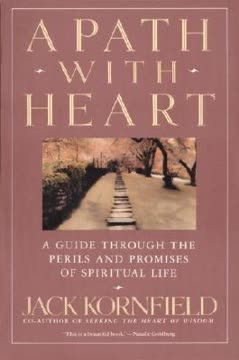
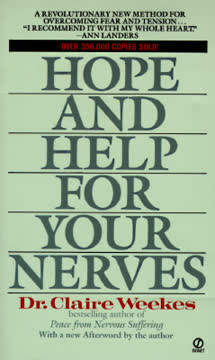
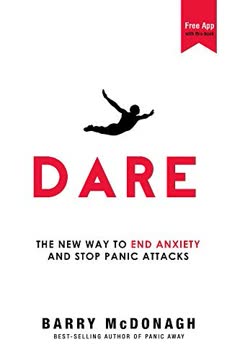


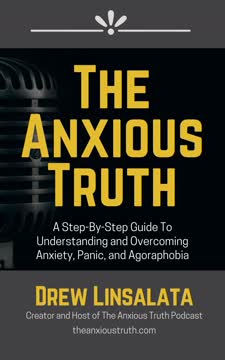
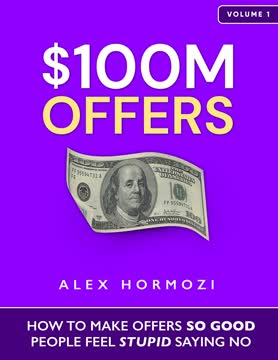
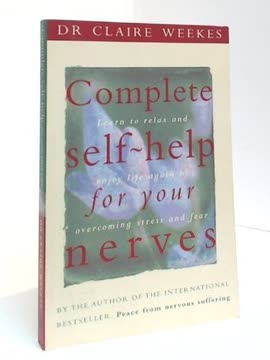
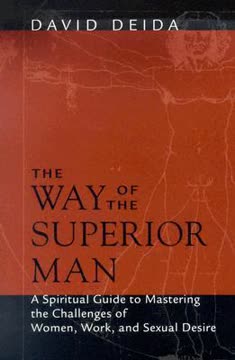
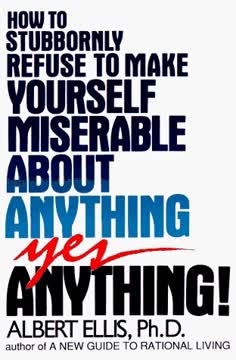
Download PDF
Download EPUB
.epub digital book format is ideal for reading ebooks on phones, tablets, and e-readers.
